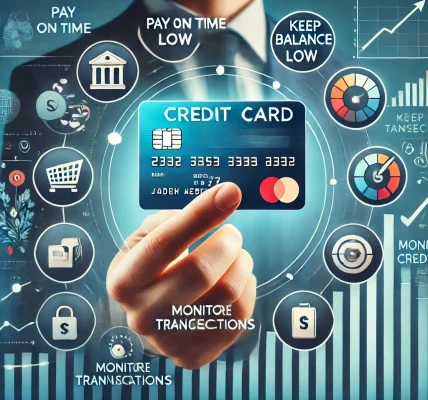Managing multiple credit cards can be a double-edged sword. On one hand, they provide financial flexibility, help build your credit score, and offer rewards. On the other hand, mismanaging them can lead to overwhelming debt and financial stress. This guide will walk you through the best strategies to handle multiple credit cards responsibly while avoiding debt traps.
1. Keep Track of All Your Credit Cards
The first step to managing multiple credit cards effectively is staying organized. Maintain a record of:
- Due dates
- Credit limits
- Interest rates
- Rewards and benefits
You can use budgeting apps, spreadsheets, or even a simple notebook to track this information.
2. Automate Your Payments
Late payments not only attract hefty fees but also negatively impact your credit score. Setting up automatic payments ensures you never miss a due date. You can schedule:
- Minimum payments to avoid late fees
- Full balance payments to prevent interest charges
3. Prioritize High-Interest Debt
If you have outstanding balances, focus on paying off the card with the highest interest rate first. This is known as the avalanche method, which saves you the most money over time. Alternatively, if you need a psychological boost, the snowball method (paying off the smallest balance first) might be better for motivation.
4. Maintain a Low Credit Utilization Ratio
Credit utilization – the percentage of your total credit limit that you’re using – plays a major role in your credit score. Keep your utilization below 30%, and ideally under 10%, for the best impact on your credit health.
5. Use Cards Strategically for Rewards
Take advantage of rewards and cashback programs by using different cards for different purchases. For example:
- A travel credit card for flights and hotels
- A grocery rewards card for supermarket purchases
- A cashback card for general expenses
However, never let rewards tempt you into overspending.
6. Avoid Carrying Balances
Credit cards charge high interest rates on unpaid balances. Always strive to pay off your balances in full each month to avoid accumulating debt.
7. Consolidate Debt If Necessary
If you’re struggling with multiple high-interest credit card balances, consider a balance transfer card or a debt consolidation loan. A balance transfer card with a 0% introductory APR period can help you pay off debt without accruing additional interest.
8. Don’t Open Too Many New Accounts at Once
Applying for multiple credit cards in a short period can lead to hard inquiries on your credit report, which may lower your credit score. Additionally, managing too many accounts can become overwhelming.
9. Regularly Review Your Credit Report
Monitoring your credit report helps you:
- Identify errors or fraudulent activities
- Understand how your credit behavior affects your score
- Make informed financial decisions
You’re entitled to a free credit report annually from each of the major credit bureaus.
10. Set a Budget and Stick to It
A solid budget prevents overspending and ensures you can pay off your balances on time. Categorize your spending and set realistic limits for discretionary purchases.
Conclusion
Managing multiple credit cards requires discipline, organization, and a clear financial strategy. By following these best practices, you can enjoy the benefits of multiple credit cards while avoiding the pitfalls of debt. Stay proactive, make informed decisions, and use your credit responsibly to build a strong financial future.




